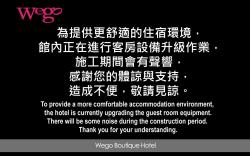Qingtiankang System_Pingteng Ancient Waterway Trail Introduction
Pingding is an old place name in Shilin District's Pingdeng Village. There are two ancient irrigation ditches named after Pingding: the Pingding Ancient Ditch and the Pingding New Ditch. Both ditches are more than 150 years old and serve three functions: irrigation, drinking water, and transportation of water. They remain a vital source of domestic water for the residents of Pingdeng Village. The Pingding Ancient Ditch Trail, a hiking path, begins at Alley 95 on Pingjing Street in Pingdeng Village, with trails that ascend and descend covered in moss. Upon reaching the Qingfeng Pavilion, which has a printing station, the mouth of the ancient ditch is not far away. At the waterway entrance, a big red inscription of "Pingding Ancient Ditch" can be seen, along with a brief history of the ditch's excavation. The trail runs parallel to the irrigation ditch, ultimately leading to the stony water channel at the end. The rich aquatic ecology and environment provide a wonderful view for hikers. The Pingding Ancient Ditch Trail is located at an altitude of approximately 300 to 500 meters within Shilin District's Pingdeng Village, where the terrain is higher to the north and lower to the south, with both the Neishuangxi and Neiliaoxi streams running through it. The mountainous hills and streams nurture a diverse plant ecosystem, with prominent species including taro, red nanmu, Chinese torrey, wind vine, and bamboo. The aquatic life includes a variety of insects and reptiles, allowing hikers to experience a journey filled with surprises while exploring the trail. Ertou Mountain rises to 523 meters and is located between Qigu Mountain and Zhugao Mountain, also known as "Wutiaoshan." The mountain has a gentle slope, covered with many grasses and trees at its peak, offering a serene landscape. From Pingdeng Village, it appears as a cluster of small hills with a flat and rounded summit. When the mountain mist rises, a dreamlike scenery can be observed. Hikers can take the small bus No. 18 and get off at the Jiaokeng or Jiaokeng Bridge station, and from there walk along Shanzu Road, heading north along Alley 181, to reach the trailhead beside No. 15, Alley 20, Lane 371. Have you ever taken a trip to appreciate the spring waters at Neishuangxi? Today we will follow the valley to visit the upper reaches of the Neishuangxi, where the stream is said to be clear, accompanied by a century-old ancient ditch, which is truly exciting and perhaps another stunning paradise. As we walk up the path flanked by bamboo forests, green moss covers the stone steps and old trees, while the occasionally appearing green streetlights exude a rustic charm. This tranquil green tunnel feels as though it has transcended time and space, perhaps guiding us back to "Pingding" a century ago. The old name of Pingdeng Village is "Pingding," hence the two ancient ditches named after it: the "Pingding Ancient Ditch" and the "Pingding New Ditch," both of which are over 150 years old. The ancient ditch serves transportation, irrigation, and drinking water needs, remaining a source of domestic water for the villagers. Turning left at a fork and following the downhill path leads to the moss-covered, historically rich Taocujiao Bridge, where the ancient ditch is nearby. Feeling adventurous, let's follow the stream downstream to play in the water, enjoying the easy path ahead. We can then rest for a moment at the small bridge pavilion before continuing. First, we encounter the most abundant water flowing into the Dengfeng Ditch. Although this ditch was developed later, it not only sources water from Neishuangxi but also gathers water from the surrounding mountain streams, making it a truly renewable resource. Next is the somewhat "senior" new ditch, and the final section of the trail follows along the ditch, ultimately leading to the water channel cave at the end, marked with "Pingding Ancient Ditch" in large red characters. On the journey to explore the ancient ditch, one will find abundant ecological surprises. With dense tree cover and a rich aquatic environment, a variety of aquatic animals can be found, including stream shrimp, crabs, small fish, and swarms of tadpoles. The dense forest also nurtures a colorful diversity of insects and reptiles. For instance, the largest dragonflies in Taiwan are rarely seen in flatlands, but they are often active near the irrigation ditch, alongside juniper dragonflies, frost-white dragonflies, and beautiful damselflies. Butterfly sightings are also common, with the Snake-eye Butterfly preferring darker environments, while Swallowtails and Red Admirals enjoy sunny spots. As you walk along the trail, keep an eye out for the charming golden beetles, walking sticks, or even stag beetles at your feet. On clear days, you might catch glimpses of the Crested Serpent Eagle or the Formosan Blue Magpie flying overhead; other protected species like the Black-crowned Night Heron, Taipei Tree Frog, Brown Tree Frog, Qingtong Silkworm, and various dragonflies and fireflies also choose to reside here. Many nocturnal animals may be less visible during the day, but careful observation can yield interesting discoveries, such as the pavilion beside Taocujiao Bridge, where the stone table is covered in dark brown droppings, interspersed with remnants of beetles, mantises, and cicadas—an uncommon sight, indicating that a group of Formosan Leaf-nosed Bats often hangs upside down resting on the roof at night. Therefore, while visiting the ancient ditch trail, be sure to keep your eyes wide open to marvel at the enchanting surprises everywhere along the ditch!

































